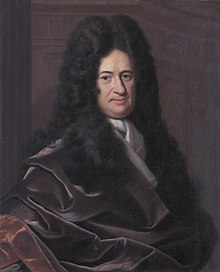Lenguaje racional universal versus
“calculus ratiocinator”.
¿Se aplica esta distinción a Leibniz?
Oscar M. Esquisabel*
Resumen
El presente trabajo aborda la cuestión
acerca de si la distinción o diferencia
que establece Frege entre una lingua
universalis y un calculus ratiocinator puede ser atribuida a Leibniz. La
conclusión de nuestros análisis es
que la distinción no puede sostenerse desde un punto de vista terminológico, dado que Leibniz utiliza las
expresiones “characteristica universalis” y “calculus ratiocinator” con signifi cados que, aunque no sean necesariamente idénticos, se hallan muy
próximos entre sí. Sin embargo, puede
encontrarse esta diferencia desde un
punto de vista conceptual, independientemente de las consideraciones
terminológicas.
Abstract
This paper deals with the issues about
whether Frege’s distinction or difference between lingua universalis (or
lingua characterica in wording of Frege)
and calculus ratiocinator can be truly
ascribed to Leibniz. The conclusion of
our present analysis is that this difference cannot be maintained from a
terminological point of view, because
Leibniz uses the expressions “characteristica universalis” and “calculus ratiocinator” in a way that, even though
they are not necessarily identical, they
are at least very close to each other.
Notwithstanding, this difference can be
maintained from a conceptual point of
view, that is, when we put aside terminological problems. In fact, when we consider the diverse ways in which Leibniz defi nes the task of this characteristic as an instrument of thought, it becomes clear that a difference between a universal characteristic and a general characteristic must be postulated. Thus, the universal characteristic corresponds more or less to what Frege calls “lingua rationalis” or “lingua characterica”, while the general characteristic pertains to the domain of what Frege said about a “calculus ratiocinator”, although in Leibniz’s conception it reaches beyond the scope of a mere calculus that is devised as a formalism to help us make inferences.
Keywords Leibniz Logic Calculus
* CONICET – IESCT-UNQ – UNLP. Correo electrónico: omesqui1@speedy.com.ar
En efecto, cuando se consideran los diversos modos en que
Leibniz define la tarea de la característica como instrumento de pensamiento, surge la necesidad de postular
una diferencia entre una característica
universal y una característica general.
Así, la característica universal corresponde en términos aproximados a lo
que Frege denomina “lingua rationalis” o “lingua characterica”, mientras
que la característica general pertenece al dominio de lo que Frege sostuvo
acerca de un “calculus ratiocinator”,
aunque en la concepción de Leibniz
la característica general tiene un
alcance mucho mayor que la de un
cálculo diseñado como un formalismo
para nuestras inferencias.
Palabras clave
Leibniz
Lógica
Cálculo
